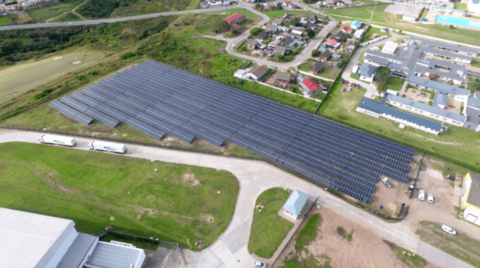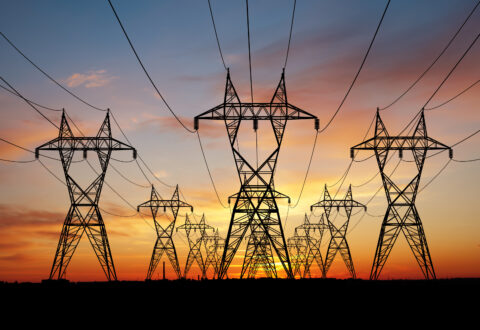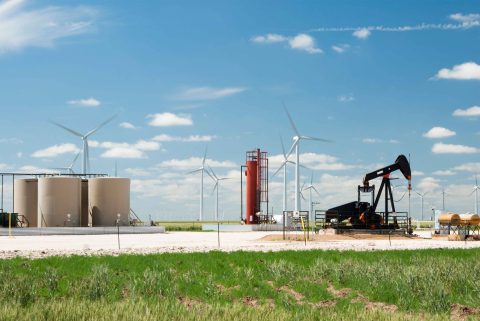SA Mining
Energy Crisis
Power outages have pitched millions of South Africa’s homes into darkness, and disrupted the economic growth recovery from the residue left by COVID-19. In the last quarter of 2021, load shedding became intensified with stage 2 (Figure 1) guaranteeing a minimum of two hours of no power and for some, four hours, per day. Multiply that by six days and it makes it unviable to run basic business operations.
No sector seems to escape the adverse impact of persistent power cuts. Manufacturing, which is one of the largest contributors to the country’s GDP, is burdened with production halts, losing time and efficiencies. Production factories are compelled to invest in commercial generators; however the frequency of the outages means more litres of fuel to sustain the generator threaten the fuel cost efficiencies of operating the generators.
Small, medium and micro enterprises (SMMEs) declined by 11% in 2020 due to COVID-19 (SEDA – SMME Quarterly Update).
Once considered the beacon of hope of unemployment alleviation, SMMEs are forced to sit this one out during the power outages due to lack of affordability for alternative energy – generators or back-up batteries.
Even the telecommunications industry, which is a vital force in business operations, has been hammered. Cellphone towers run on electricity, paired with back-up batteries. Prolonged power cuts mean insufficient network coverage; fibre provision is also compromised. The result is limited or no internet.
Modern business has been wired to rely on network connectivity. Outages disrupt communication, making it counterproductive for employees whose employers have opted for the “working from home” model. The average worker does not have access to solar power or inverter batteries; consequently a four-hour or more power outage results in compromised output.
Another utility affected is water, which requires electricity to pump water from reservoirs into towers. In food and leisure, some fast-food and sit-down restaurants must shut their doors during load shedding due to a lack of back-up energy to fire up their cooking platforms. Not only do they lose customers who may never return, but raw material (non-cooked food) can spoil.
In mining, operations are interrupted in order to preserve power and for the safety of miners.
In a country already weighed down by a high unemployment rate of 34.4% (QLFS 2nd Quarter 2021), load shedding further resulted in job losses of around 350 000 in 2021. GDP growth reduced by 3.0 percentage points (South Africa Economic Outlook 2021 – PwC). This affects investor confidence. The South African Reserve Bank has kept its growth predictions modest for 2022 and 2023, at 1.7% and 1.8% respectively, according to Investec’s monetary policy update.
Economically the mining sector’s performance resulted in a 38% growth year on year (June 2020 to June 2021), providing a healthy contribution of 7.6% to South Africa’s GDP in the financial year 2021. It created and sustained approximately 2 300 000 direct and indirect jobs on average and contributed around R229.1-billion to total government revenue, says SA Mine 2021 – PwC.
The impact of mining on the economy is paradoxical in nature. Although we see a positive economic contribution, mining remains an accomplice to negative environmental impact. Mining operations result in high CO2 emissions, high electricity and water usage, and contribute to pollution.
Coal remains a contentious commodity. There is an immediate pressure from the globe for SA, which ranks as the 12th biggest source of greenhouse gas emissions. Certainly, it has a responsibility to reduce the use of fossil fuels, but this move must be strategic. Coal is one of the key mining commodities. It is a major source of energy in the production of electrical power, it’s versatile, with positive performance and contributions to the economy in the production of steel and a key source of energy in aluminium and cement production.
Socioeconomically, 335 000 people in SA’s coal mining communities are dependent on coal for income, says PwC’s SA Mine 2021.
Mineral Resources and Energy Minister Gwede Mantashe has called on African nations to form a united front to resist this global pressure to rapidly abandon fossil fuels, arguing that Africa is the least polluting continent in the world.
Mantashe further says the intra-African trade of fossil fuels should be prioritised, and that countries should work to establish an African finance arm to raise capital for investments in oil and gas on the continent.
Realistically, the decommissioning will not happen at the pace that’s expected. Eskom expects decommissioning of approximately 24.1GW of coal-fired power plants in the period beyond 2030 to 2050, according to Auctusmetals.com.
Eskom indicates that despite decommissioning of old power plants and preference for renewables and gas, coal remains dominant in the energy mix for the planning period up to 2030.
Renewable energy in business is gaining momentum. Government’s approval for companies to generate up to 100MW for own needs is welcomed by all, especially the mining sectors, as demonstrated by Anglo American Platinum awarding the Pele Green Energy and EDF Renewables as their supplier of choice to build a 100MW solar photovoltaic (PV) plant in Limpopo.
Retail giant Shoprite announced its plans to power 25% of its operations with renewable energy with the addition of 22 new PV sites to double its solar capacity. South African Breweries will now produce Castle Lite using renewable electricity, reducing electricity from the grid and decreasing interruptions to production.
Property developers are now planning to incorporate renewable products in their building and construction plans as buildings generate nearly 40% of annual global CO2 emissions.
The energy transition is a larger mission, and mining will play an imperative role in this transition. There is a surge of alternative energy technologies – inverters, lithium batteries, wind turbines, electric vehicles and their battery chargers; even solar panels are being upgraded for faster storage from the sun.
These technologies will bring a complete evolution of the mining mix to incorporate the sourcing of raw materials required for the structural development of renewable energy products. Lithium, cobalt, zinc, chromium, aluminium, copper, iron, concrete, steel, plastic, glass, iron, chromium, copper, aluminium, manganese and nickel are among the list of demanded minerals for solar, wind and types of battery storages.
The demand for these products will not only impact the mining sector, but also open doors for new professions in the renewable energy space, even bringing about change on the academic curriculum front, reigniting interest in minerals and chemistry. It is also an open gate for infrastructure and skills development, which may just ease unemployment through new industries.
Investors and local financial institutions must help create capabilities committed to expanding renewable energy financing and aiding customers, regulators and all other stakeholders in efforts to transform the country’s energy mix.





